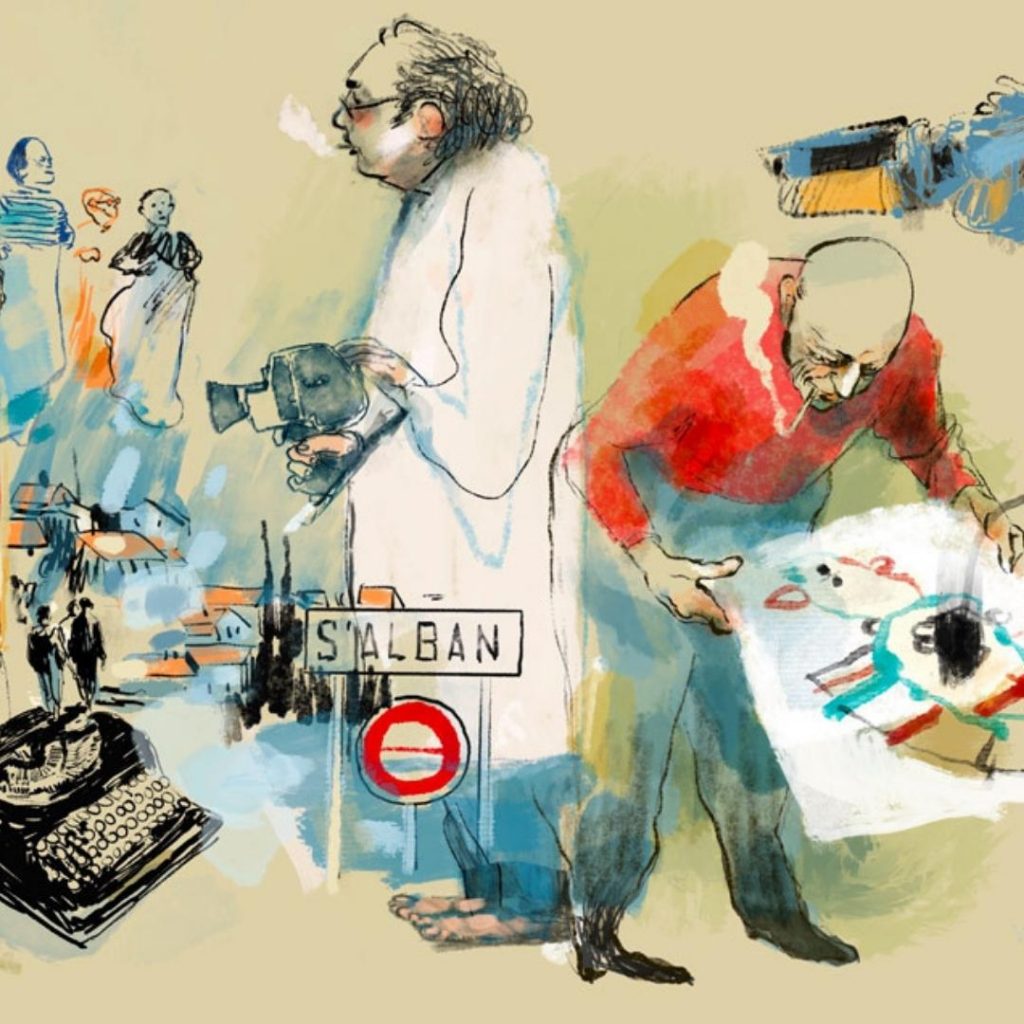

The CCCB
The CCCB (Centre de Cultura Contemporània de Barcelona) and MACBA (Museo de Arte Contemporáneo de Barcelona) connect together. They are in the heart of the Raval, with gorgeous winding streets opening up into small squares and shops. It contains a mixture of exhibitions and archives in a gorgeous setting. I went there for an exhibition on Frances Tosquelles. I hadn’t heard of him, but I was curious about it.
Frances Tosquelles – like a sewing machine in a wheat field
This exhibition was really very interesting. Tosquelles worked in psychiatry but specifically in deinstitutionalisation. His work brought the institution, art, and the community together in an avant-garde way. Operating first from a concentration camp then a sanatorium, famous artists came to join him in the space, where ‘patients’ came into the artistic process. I don’t know if I agree with the way he still differentiated between artists and patients but I think it was innovative for its time.
I was also able to get a significant ticket discount for myself and a companion by explaining that Enhanced/Enhanced on PIP was similar to 75% disability.
The institution
It was fascinating to find out more about the way he envisaged and built the de-institution. He created what he thought of as a space of co-operative relationships between the people resident or working there. He tried to move from detention into a community, creating smaller self-managed living groups. I wish I’d been able to take in more of the exhibition. However, a lot was presented in videos which changed caption language regularly. This meant you’d have to wait until the captions were in a language you spoke – but it seemed to keep changing. While I am fine with English or Spanish, I couldn’t follow the Catalan captions (though I obviously understand why they were in place!).
A lot of the documents were also only in Catalan, which I only read slowly. This meant that I probably missed a lot, but I really enjoyed what I took in.
Access to the exhibition
The building had reasonably good access. However, you needed a security guard to help you access the lift on some levels. Frustratingly, a lot of the exhibition was presented on the top of glass-topped tables. These were very difficult to see into and meant that I missed a lot of the photos and documents. Even with a riser on my chair I could only draw parallel to the tables and couldn’t see the contents.
However, the art presented was fascinating, and I’m very glad indeed that I went.